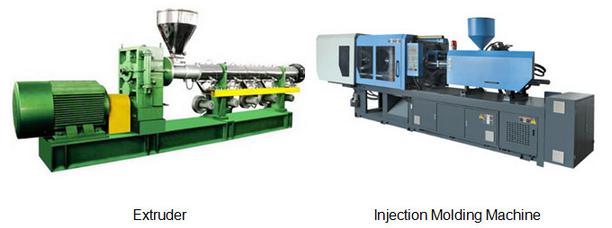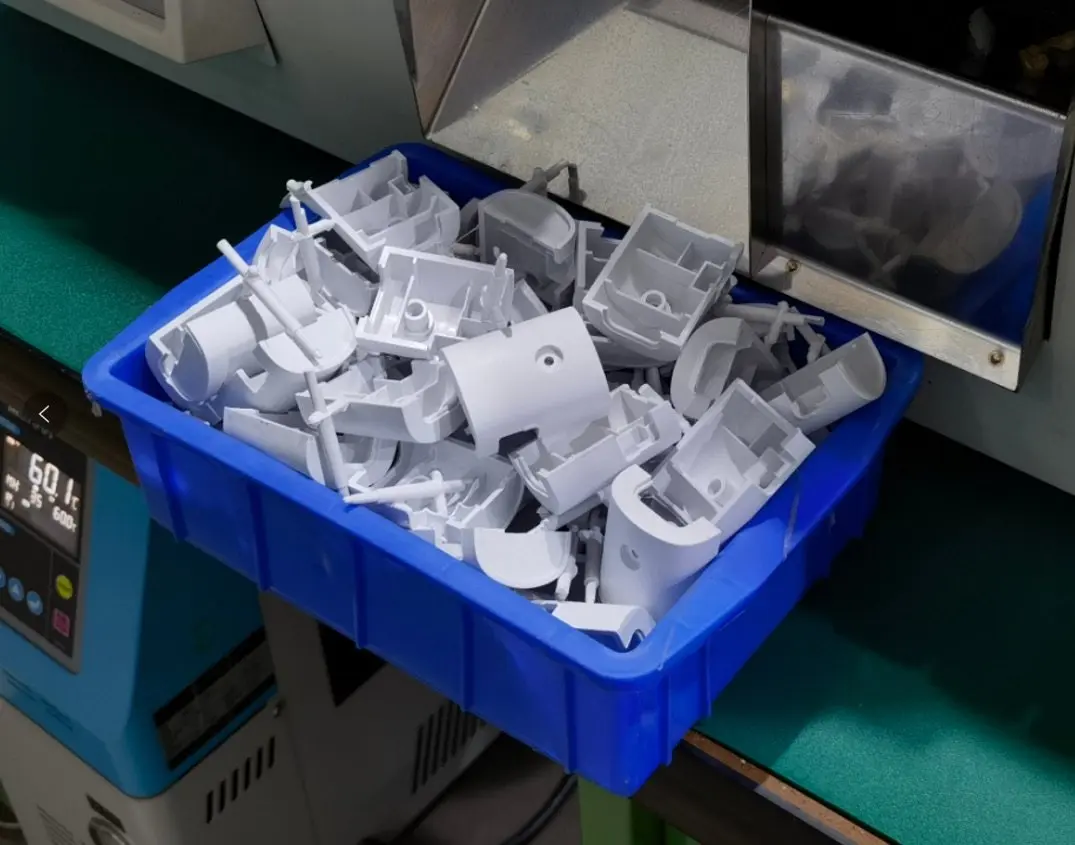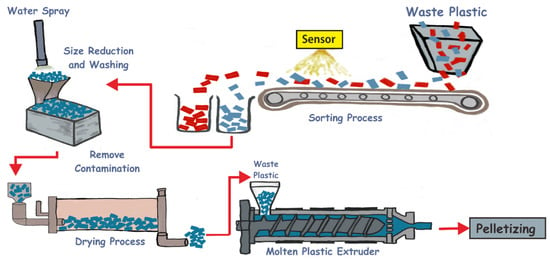No, extrusion and injection molding serve different purposes and are not directly comparable. One is not universally “better” than the other; it depends on the specific application.

Comparison Criteria
Material Versatility
Extrusion Material Options
- Extrusion typically works well with thermoplastic and elastomeric materials.
- Common materials include PVC, PE, and PP.
- Extrusion materials
Injection Molding Material Choices
- Injection molding can handle a broader range of materials, including high-performance polymers and metals.
- Suitable for medical-grade resins and food-safe materials.
Cost Efficiency
Extrusion Costs
- Extrusion often has lower setup costs.
- Operating costs can vary depending on the material and complexity.
- Suitable for long runs to amortize the initial costs.
Injection Molding Costs
- High initial cost for molds and tooling.
- Per-unit costs can be extremely low for high-volume productions.

Production Speed
Extrusion Speed
- Generally faster for simpler geometries and long, continuous forms.
- Speed depends on the type of material and the complexity of the die.
Injection Molding Speed
- Slower startup due to tooling and mold setup.
- Capable of producing a large number of complex parts quickly once set up.
Tooling and Setup
Extrusion Tooling
- Simplified tooling mainly involves dies and a few additional components.
- Quicker setup time as compared to injection molding.
Injection Molding Setup
- Involves the creation of complex molds, often requiring CNC machining or 3D printing.
- The setup process can be time-consuming and costly.
Tolerance and Precision
Extrusion Tolerance
- Offers a moderate level of precision.
- Tolerances can vary depending on the material and extrusion process used.
Injection Molding Precision
- High level of precision and tight tolerances.
- Suitable for intricate designs and minute details.
Scalability
Extrusion Scalability
- Better suited for medium-scale production.
- Not as efficient for short runs due to setup costs.
Injection Molding Scalability
- Ideal for high-volume production runs.
- The high initial costs can be easily amortized over large production quantities.
Advantages of Extrusion
Lower Initial Costs
- Extrusion machines are generally less expensive than injection molding machines.
- Costs of dies for extrusion are often lower than the molds used in injection molding.
- Shorter setup times contribute to lower initial expenses.
- Cost considerations in extrusion
Easier for Simple Geometries
- Extrusion excels in creating long, uniform shapes and profiles.
- Simplicity in design reduces the likelihood of production errors.
- Ideal for creating pipes, rods, and other linear products.
- Geometries in Extrusion
High Throughput for Certain Products
- Continuous nature of extrusion allows for a high volume of product.
- The rate of production remains steady once the machine reaches optimal operating conditions.
- Well-suited for large orders requiring uniform, long-length parts.
Material Waste Reduction
- Extrusion often results in fewer waste materials, as excess can be recycled back into the process.
- End-trimming waste is generally lower compared to injection molding.
- Streamlined operations reduce material handling and waste generation.

Advantages of Injection Molding
Complex Geometries
- Injection molding excels in crafting intricate and detailed components.
- This technique can produce parts with internal and external threads, holes, and even multi-part assemblies in a single step.
- Good for producing consumer goods like toys, automotive components, and medical devices.
High Precision and Tolerance
- Exceptionally tight tolerances can be maintained, even for complex geometries and small parts.
- Ideal for industries requiring high-precision components, such as aerospace and healthcare.
Material Diversity
- Can work with a broad array of materials including thermoplastics, thermosets, and some metals.
- Provides the ability to mix multiple materials and colors in a single molding process.
Scalability and Mass Production
- Once molds are made and machines are set up, the production speed is extremely fast.
- Suitable for mass production where tens of thousands or even millions of the same part need to be produced.
- Scalability in Injection Molding

Case Studies
Extrusion in the Automotive Industry
- Application in Weather Stripping: These products need to be long and consistent, which makes extrusion a suitable method.
- Creation of Tubes and Pipes: Fuel lines, hydraulic hoses, and other tubular components are often made using extrusion. The process allows for the creation of complex cross-sectional profiles with varying wall thicknesses.
- Advantages in Weight Reduction: Aluminum extrusions are gaining popularity in the automotive industry for their lightweight and strength, contributing to improved fuel efficiency.
- Automotive Applications: For a comprehensive understanding of how extrusion fits into the automotive industry.
Injection Molding in Medical Devices
- Surgical Instrument Components: Injection molding is heavily used for creating intricate components of surgical instruments due to its high precision capabilities.
- Disposable Medical Items: Items such as syringe bodies, blood sample components, and IV components are commonly made via injection molding. The process ensures sterility and allows for high-volume production.
- Dental Devices: From toothbrushes to orthodontic appliances, injection molding offers the precision required in dental applications.
- Material Considerations: The ability to use medical-grade and biocompatible materials makes injection molding a go-to choice for medical devices.




